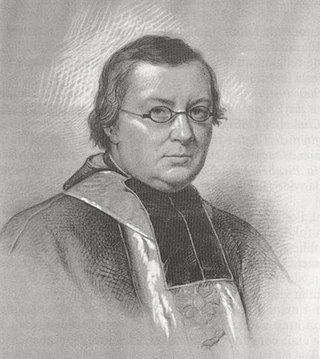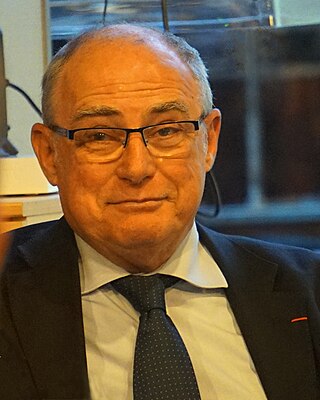Jean-Jacques Glassner (born 1944 in Bischwiller, Alsace) is a French historian, specialist of the Mesopotamian world and cuneiform script.
During his studies at the Pantheon-Sorbonne University, he devoted himself to assyriology. He later taught at the universities of Geneva, Poitiers, Strasbourg, Jerusalem. A professor at the École des hautes études en sciences sociales (EHESS), he is also directeur de recherche at the CNRS where he heads the Unit of archaeology and sciences of ancient times in Paris West University Nanterre La Défense.
His research has focused specifically on the cuneiform script. In 2006, appeared under his leadership the French version of the "Archaeological encyclopedia of the Holy land" (Dictionnaire archéologique de la Bible) (Paris, Hazan).

François Lenormant was a 19th-century French Hellenist, Assyriologist and archaeologist.

Salim Jay is a Franco-Moroccan novelist, essayist and literary critic living in France. He has written about 20 books, numerous essays and more than thousand newspaper articles.

Jean Starobinski was a Swiss literary critic.

Félix Marie Charles Texier was a French historian, architect and archaeologist. Texier published a number of significant works involving personal travels throughout Asia Minor and the Middle East. These books included descriptions and maps of ancient sites, reports of regional geography and geology, descriptions of art works and architecture, et al.

Jean-Jacques Bourassé was a French Roman Catholic priest, archaeologist and historian. He made his preparatory studies for the priesthood in Paris. In 1835, he taught the natural sciences at the preparatory seminary of Tours, where he began a course of archaeology that soon attracted attention. The results achieved by him in a comparatively new field of research were such as to entitle him to be considered a veritable pioneer in France of the science of Christian archaeology. In 1884 he became professor at the grand séminaire and held the chair of dogmatic theology there for six years. He then discontinued teaching in order to devote himself entirely to the preparation of his various archæological works. Among the productions published by him the best known are: Archéologie Chrétienne (1841); Les Cathédrales de France (1843); Les plus belles églises du monde (1857); Recherches historiques et archéologiques sur les églises romaines en Touraine (1869).

Jean Varenne was a French Indologist and a prominent figure of the Nouvelle Droite. He taught Sanskrit at the Aix-Marseille University, then at Jean Moulin University Lyon 3, where he was eventually nominated professor emeritus. Varenne has also been a visiting professor at the University of Chicago, and at other universities in India, Cambodia and Mexico.

Jean Nougayrol was a French cuneiformist who studied a number of the Amarna letters.
Jean Marie Augustin Charbonneaux was a 20th-century French archaeologist.
Dominique Charpin is a French Assyriologist, professor at the Collège de France, and corresponding member of the Académie des Inscriptions et Belles-Lettres, specialized in the "Old-Babylonian" period.
Cécile Michel is a French epigrapher and archaeologist.

Maurice Sartre is a French historian, an Emeritus professor of ancient history at the François Rabelais University, a specialist in ancient Greek and Eastern Roman history, especially the Hellenized Middle East, from Alexander to Islamic conquests.
Jean-Pierre Néraudau was a 20th-century French writer and professor of Latin literature.

Jean-Christophe Bailly is a French writer, poet and playwright.

Claude-François Baudez was a French Mayanist, archaeologist and iconologist. He was honorary director of research at the French National Centre for Scientific Research, a specialist on the rituals and beliefs of Mesoamerica, particularly of the Maya civilisation.

Michel Zink is a French writer, medievalist, philologist, and professor of French literature, particularly that of the Middle Ages. He is the Permanent Secretary of the Académie des Inscriptions et Belles-Lettres, a title he has held since 2011, and was elected to the Académie française in 2017. In addition to his academic work, he has also written historical crime novels, one of which continues the story of Arsène Lupin.

Thomas Christian Römer is a German-born Swiss biblical scholar, exegete, philologist, professor, and Reformed minister. After teaching at the University of Geneva, he became professor of the Old Testament at the University of Lausanne. From 2007, has held the chair "Biblical environments" at the Collège de France, of which he became administrator in 2019. The Collège de France is considered to be France's most prestigious research establishment.

The Caylus vase is an Egyptian alabaster jar dedicated in the name of the Achaemenid king Xerxes I in Egyptian hieroglyphs and Old Persian cuneiform, which in 1823 played an important role in the modern decipherment of cuneiform and the decipherment of ancient Egyptian scripts.

Once Upon a Time in Mesopotamia is a 1998 documentary film adapted from the nonfiction book of the same name by French Assyriologist Jean Bottéro and archaeologist Marie-Joseph Stève. Directed by Jean-Claude Lubtchansky, and co-produced by Trans Europe Film, La Sept-Arte, Éditions Gallimard, Louvre Museum and La Cinquième, with voice-over narration by French actors François Marthouret, Corinne Jaber and the director, the documentary is structured like an adventure film, takes viewers into the world of the first discoverers, epigraphists and Assyriologists who revealed Mesopotamian archaeology to the modern world.
The Prix Saintour is a series of prizes awarded annually by each of the five institutions making up the Institut de France since 1835.
Pierre Cabanes was a French epigraphist and historian, professor emeritus of the history of antiquity at the University of Paris X-Nanterre, President of the University Clermont-Ferrand II (1977–1982), and head, from 1992, of the French Archaeological and Epigraphic Mission in Albania.